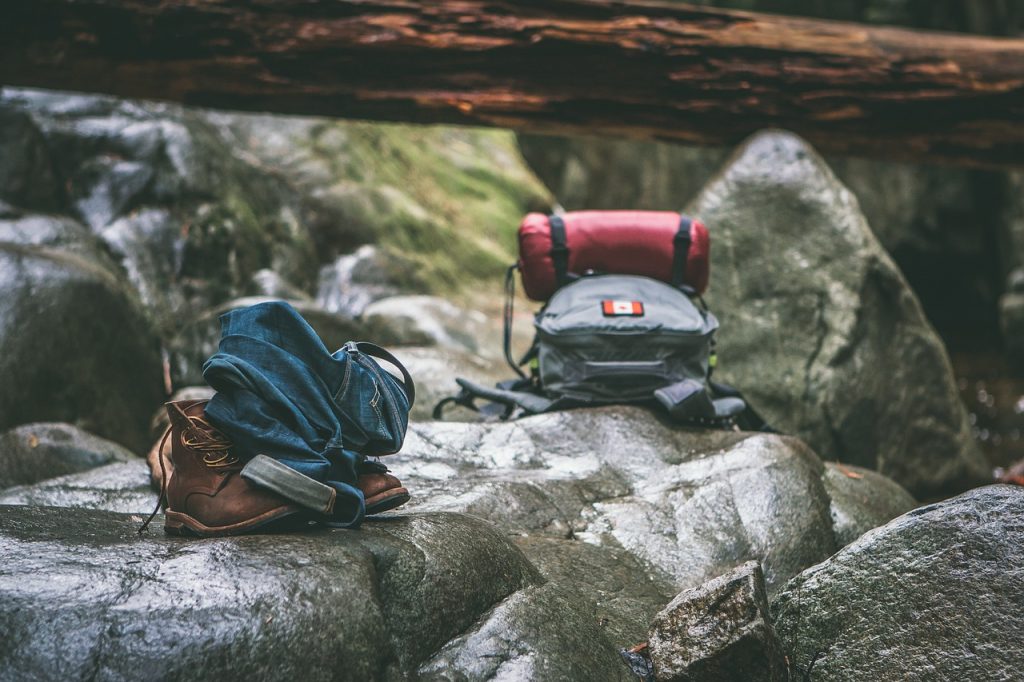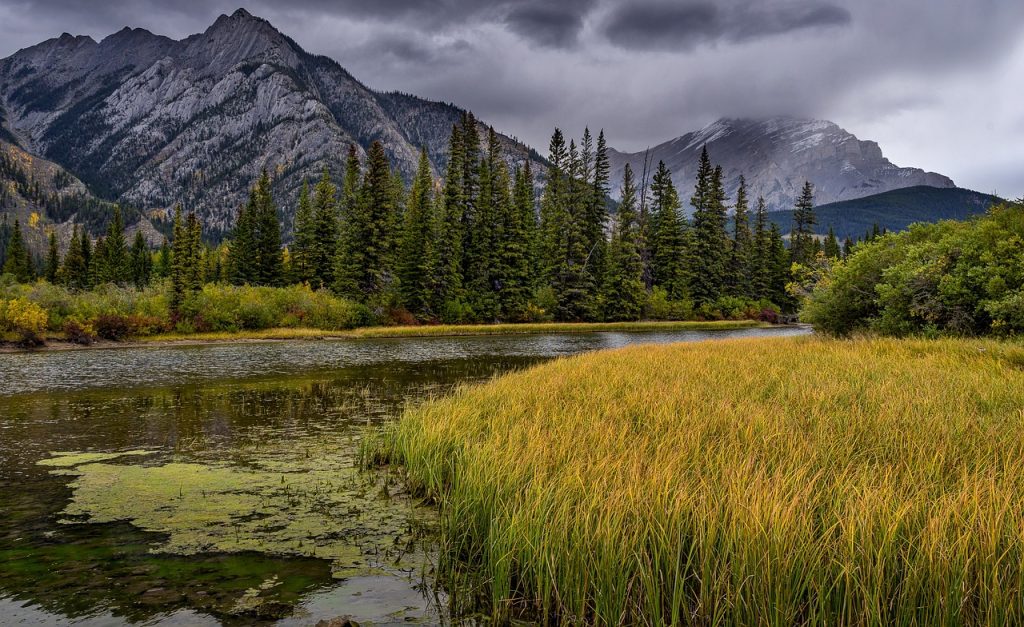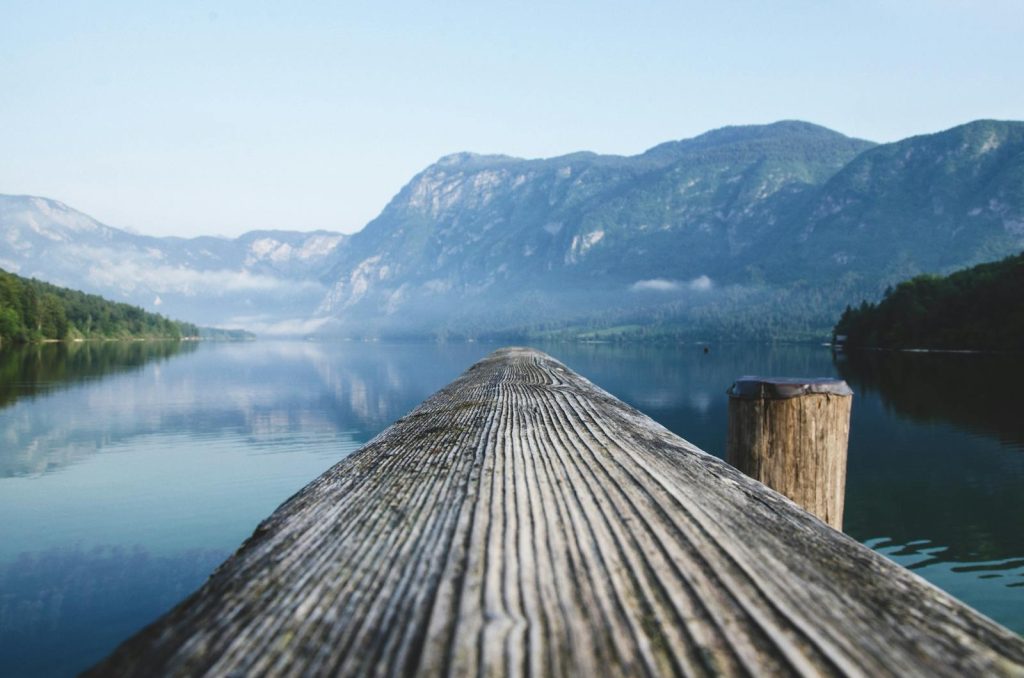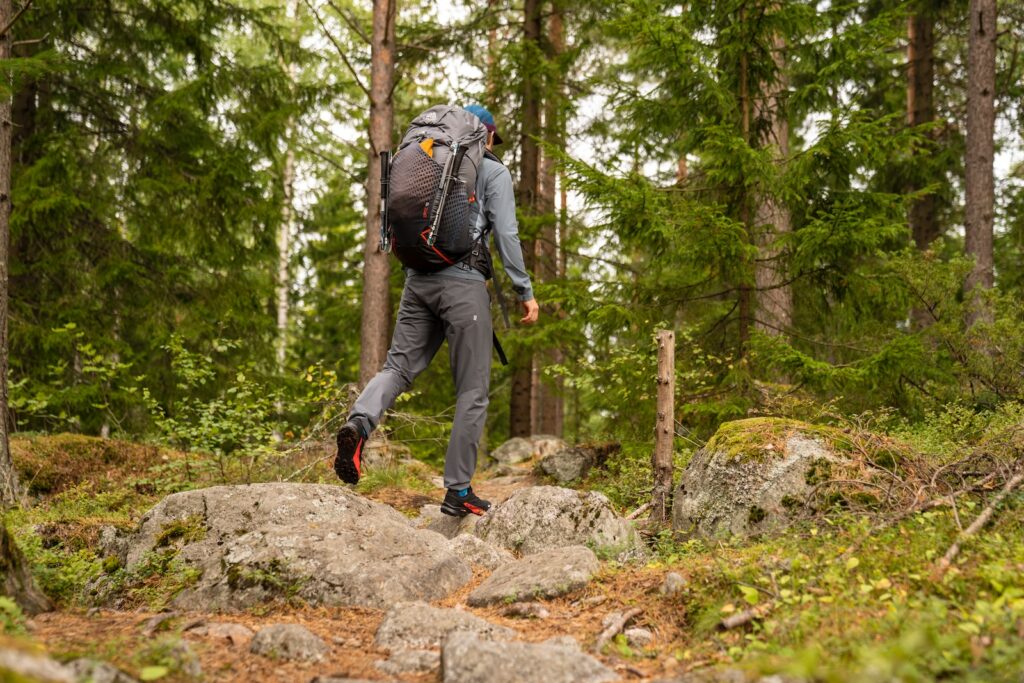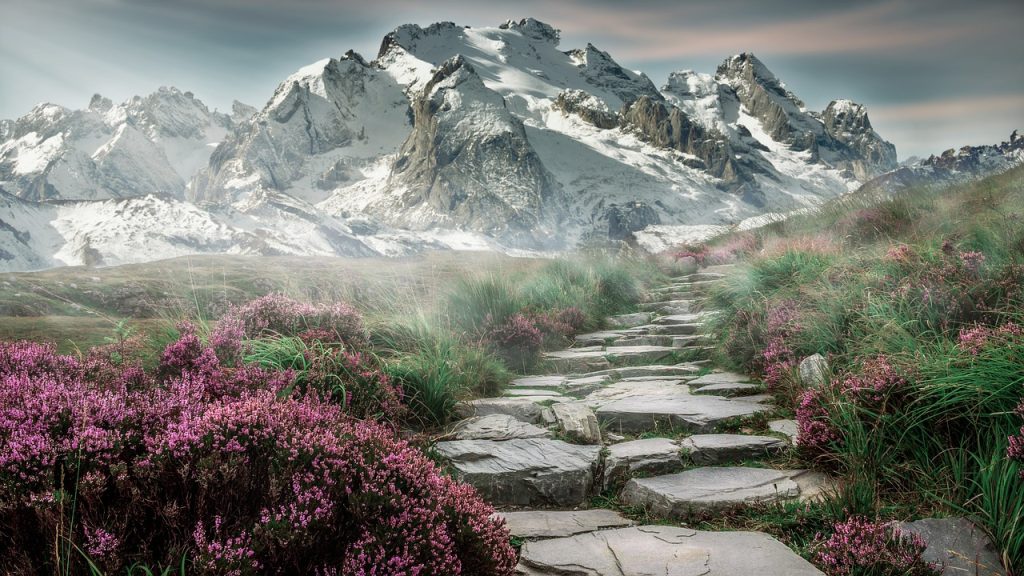 Andreas Schnabl on Pexels">
Andreas Schnabl on Pexels">
 Andreas Schnabl on Pexels">
Andreas Schnabl on Pexels">
Winter Wonderland: Essential Tips for Cold-Weather Hiking
Brave the chill and become one with nature this winter by embarking on an exhilarating cold-weather hiking adventure. Whether you’re an experienced hiker or new to the trails, hiking in winter brings a unique set of challenges and rewards. From snow-covered peaks to frozen waterfalls, the beauty of winter landscapes is unmatched, but it’s important to be well-prepared for the journey ahead.
In this comprehensive guide, we will provide you with essential tips for cold-weather hiking, ensuring you stay safe, warm, and maximize your enjoyment. Discover the best gear to keep you snug and protected from the elements, learn how to navigate through icy terrains, and find out about essential winter hiking safety precautions.
So, grab your warmest layers, lace up your sturdy boots, and get ready to explore a winter wonderland like never before. Whether you’re planning a day hike or a multi-day adventure, our expert advice will help you make the most of your cold-weather hiking experience.
- Importance of preparation and planning
- Essential gear for cold-weather hiking
- Layering techniques for staying warm
- Tips for maintaining hydration in cold conditions
- Safety precautions for cold-weather hiking
- Choosing the right trail for winter hiking
- Winter photography tips for capturing the beauty of the landscape
- Post-hike care and recovery
- Conclusion: Embracing the beauty and challenges of winter hiking
Importance of preparation and planning

Preparation is key when it comes to cold-weather hiking. Before heading out, it’s important to plan your route, check the weather forecast, and let someone know about your hiking plans. Winter weather can be unpredictable, and conditions can change rapidly, so it’s crucial to be well-prepared.
Additionally, make sure to pack extra supplies such as food, water, and emergency gear. In cold temperatures, your body burns more calories to stay warm, so it’s important to have enough food to fuel your hike. Carry a map, compass, and a GPS device to help you navigate through the trails, especially if they are covered in snow.
Lastly, familiarize yourself with the signs of hypothermia and frostbite, and know how to treat them. Being prepared for any potential emergencies will give you peace of mind and allow you to fully enjoy your winter hiking adventure.
Essential gear for cold-weather hiking
Having the right gear is crucial for a successful and enjoyable cold-weather hike. Start with a good pair of insulated and waterproof hiking boots. These will keep your feet warm and dry, providing both comfort and protection. Don’t forget to wear warm, moisture-wicking socks to prevent blisters and keep your feet cozy.
Layering is key when it comes to dressing for cold-weather hiking. Start with a moisture-wicking base layer that will keep sweat away from your body, preventing you from getting chilled. Add an insulating layer, such as a fleece or down jacket, to trap your body heat. Finally, top it off with a waterproof and windproof outer layer to protect you from the elements.
Don’t forget to protect your extremities. Invest in a good pair of insulated gloves, a warm hat, and a neck gaiter or scarf to cover your face. These will help prevent heat loss from your body and keep you comfortable throughout your hike.
Layering techniques for staying warm
Layering is not only about wearing multiple clothing items; it’s about strategically choosing the right fabrics and adjusting your layers as needed. The base layer should be made of moisture-wicking material, such as merino wool or synthetic fibers. This will keep sweat away from your skin, preventing you from getting cold and damp.
The middle layer should provide insulation. Fleece jackets or down vests are great choices as they are lightweight and provide excellent warmth. If the weather is particularly cold, consider adding an additional insulating layer for extra warmth.
The outer layer should be windproof and waterproof to protect you from the elements. Look for jackets and pants made with breathable materials that will allow moisture to escape while keeping you dry. Adjustable cuffs and hems are also important features to consider as they help seal out the cold air.
Remember to adjust your layers as you hike. If you start to feel too warm, remove a layer or open up your jacket to allow excess heat to escape. On the other hand, if you start to feel cold, add an extra layer or zip up your jacket to retain your body heat.
Tips for maintaining hydration in cold conditions
Staying hydrated is just as important in winter as it is in summer, even though you may not feel as thirsty. Cold temperatures can increase your urine production and cause you to lose fluids faster than you realize. Additionally, the dry winter air can also contribute to increased water loss through respiration.
To stay hydrated during your cold-weather hike, start by drinking plenty of fluids before you hit the trail. Aim for at least 16 to 20 ounces of water or a sports drink. Carry a water bottle or a hydration bladder with you and take small sips regularly, even if you don’t feel thirsty.
Avoid consuming alcohol or caffeinated beverages as they can dehydrate you. Instead, opt for warm fluids such as herbal tea or hot water with lemon to keep you hydrated and warm from the inside out.
If you’re hiking in freezing temperatures, consider insulating your water bottle or bladder to prevent it from freezing. Use an insulated sleeve or store it inside your backpack, close to your body heat. You can also add electrolyte tablets to your water to help replenish any lost minerals.
Safety precautions for cold-weather hiking
Cold-weather hiking presents unique safety challenges that need to be addressed to ensure a safe and enjoyable experience. Here are some essential safety precautions to keep in mind:
- Check the weather forecast: Before heading out, make sure to check the weather forecast for the area you’ll be hiking in. Avoid hiking during extreme weather conditions such as blizzards or heavy snowfall.
- Be aware of daylight hours: Days are shorter in winter, so plan your hike accordingly and make sure to bring a headlamp or flashlight in case you end up hiking in the dark.
- Stay on marked trails: Winter landscapes can be deceiving, with hidden crevasses or unstable snow. Stick to marked trails to avoid potential hazards.
- Use traction devices: Invest in traction devices such as microspikes or crampons to improve your grip on icy surfaces. These will provide extra stability and prevent slips and falls.
- Practice proper avalanche safety: If you’re hiking in mountainous areas with a risk of avalanches, make sure to take the necessary precautions. Educate yourself on avalanche safety, carry a beacon, shovel, and probe, and consider taking an avalanche safety course.
By taking these safety precautions and staying vigilant throughout your hike, you can minimize the risks associated with cold-weather hiking and ensure a safe and enjoyable adventure.
Choosing the right trail for winter hiking
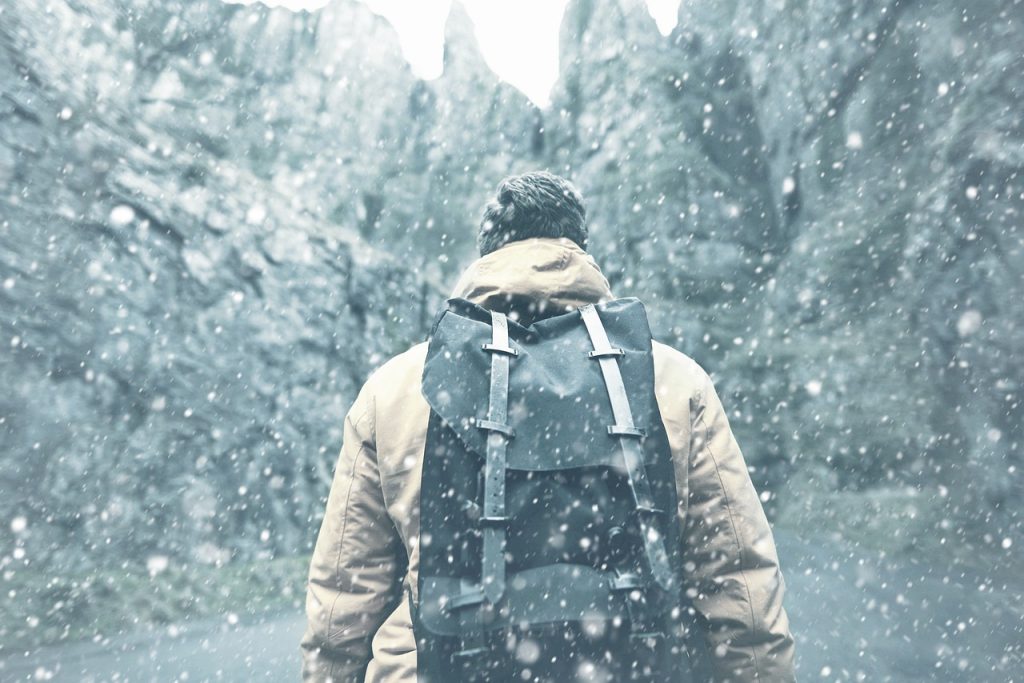
When it comes to choosing a trail for winter hiking, there are a few factors to consider. First and foremost, assess your skill level and experience. If you’re new to winter hiking, start with shorter and less challenging trails to familiarize yourself with the unique conditions.
Research the trail beforehand and look for recent trip reports or trail conditions. This will give you an idea of what to expect and any potential hazards to be aware of. Consider the elevation gain, exposure to wind, and the difficulty of the terrain.
It’s also important to consider the accessibility of the trail. In winter, some trails may be closed or require additional permits. Make sure to check with the local park or trail authority for any restrictions or closures.
Lastly, choose a trail that matches your fitness level and time constraints. If you’re planning a multi-day hike, make sure you have enough daylight hours and camping options along the trail. Plan your itinerary accordingly and leave enough time for rest breaks and enjoying the scenery.
Winter photography tips for capturing the beauty of the landscape
Winter landscapes offer breathtaking photo opportunities, but capturing the beauty of the scenery can be challenging. Here are a few tips to help you take stunning winter hiking photos:
- Timing is everything: The light during winter can be magical, especially during sunrise or sunset. Plan your hike accordingly to take advantage of the golden hour and capture the warm, soft light.
- Use a polarizing filter: A polarizing filter can help reduce glare from snow and ice, making the colors more vibrant and the details sharper. It can also enhance the contrast between the sky and the landscape.
- Look for interesting compositions: Winter landscapes can be monochromatic, so look for interesting elements to add depth and texture to your photos. This could be a frozen waterfall, a snow-covered tree, or a lone hiker in the distance.
- Experiment with exposure: Snow can fool your camera’s light meter, resulting in underexposed or overexposed photos. Try using the exposure compensation feature or manual mode to adjust the exposure and get the desired result.
- Protect your gear: Cold temperatures can drain your camera’s battery faster, so make sure to carry spare batteries and keep them warm by storing them close to your body. Consider using a rain cover or a waterproof camera bag to protect your gear from snow and moisture.
Remember to enjoy the experience and don’t get too caught up in capturing the perfect shot. Take the time to immerse yourself in the winter wonderland and let your photos be a reflection of the beauty and serenity you encounter.
Post-hike care and recovery
After a successful cold-weather hike, it’s important to take care of your body and allow it to recover. Here are some post-hike care tips:
- Warm up: Once you finish your hike, change into dry clothes as soon as possible to prevent heat loss. Drink warm fluids and have a hot meal to replenish your energy.
- Stretch and cool down: Spend some time stretching your muscles to help prevent stiffness and soreness. Focus on your legs, back, and shoulders, as these are the areas most engaged during hiking.
- Hydrate and refuel: Drink plenty of fluids and eat a nutritious meal to replenish your body. Include protein-rich foods to aid in muscle recovery.
- Take care of your feet: Remove your hiking boots and socks and inspect your feet for any blisters or hot spots. Treat them with blister pads or moleskin to prevent further irritation.
- Rest and relax: Give your body enough time to rest and recover. Take a warm bath or use a heating pad to soothe sore muscles. Get a good night’s sleep to allow your body to heal and recharge.
By taking care of your body post-hike, you’ll reduce the chances of developing any injuries or discomfort and be ready for your next winter hiking adventure.
Conclusion: Embracing the beauty and challenges of winter hiking
Winter hiking offers a unique and rewarding experience for outdoor enthusiasts. From the snow-covered landscapes to the crisp air, there’s something magical about exploring the trails during the colder months. By following the essential tips provided in this guide, you’ll be well-prepared to tackle the challenges of winter hiking and fully embrace the beauty of the season.
Remember to plan and prepare, wear appropriate gear, practice layering techniques, stay hydrated, and prioritize safety. Choose the right trail for your skill level, capture the beauty of the landscape through photography, and take care of your body post-hike.
So, lace up your boots, bundle up in your warmest layers, and embark on your winter wonderland adventure. With the right mindset and preparation, you’ll create unforgettable memories and discover a whole new world of hiking possibilities in the winter. Stay safe, stay warm, and enjoy the journey!

